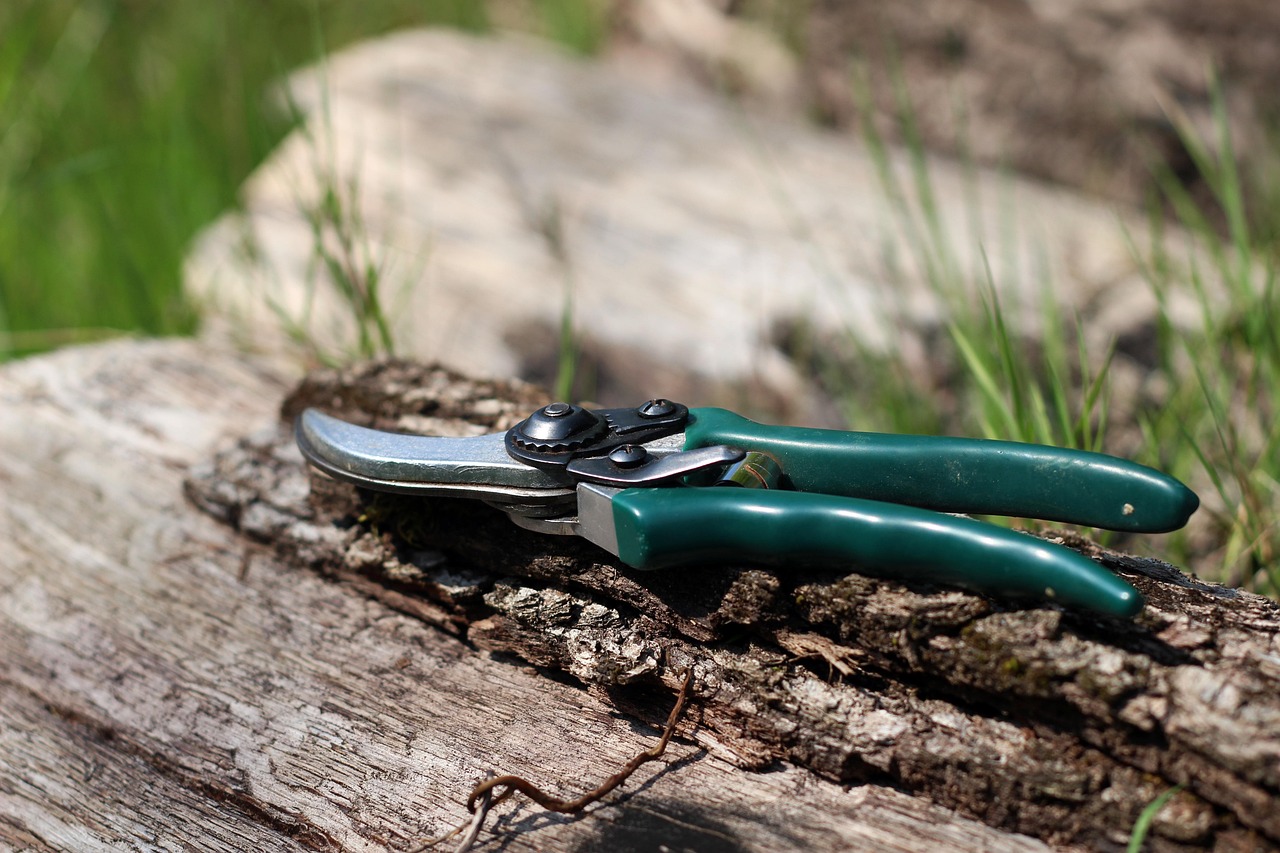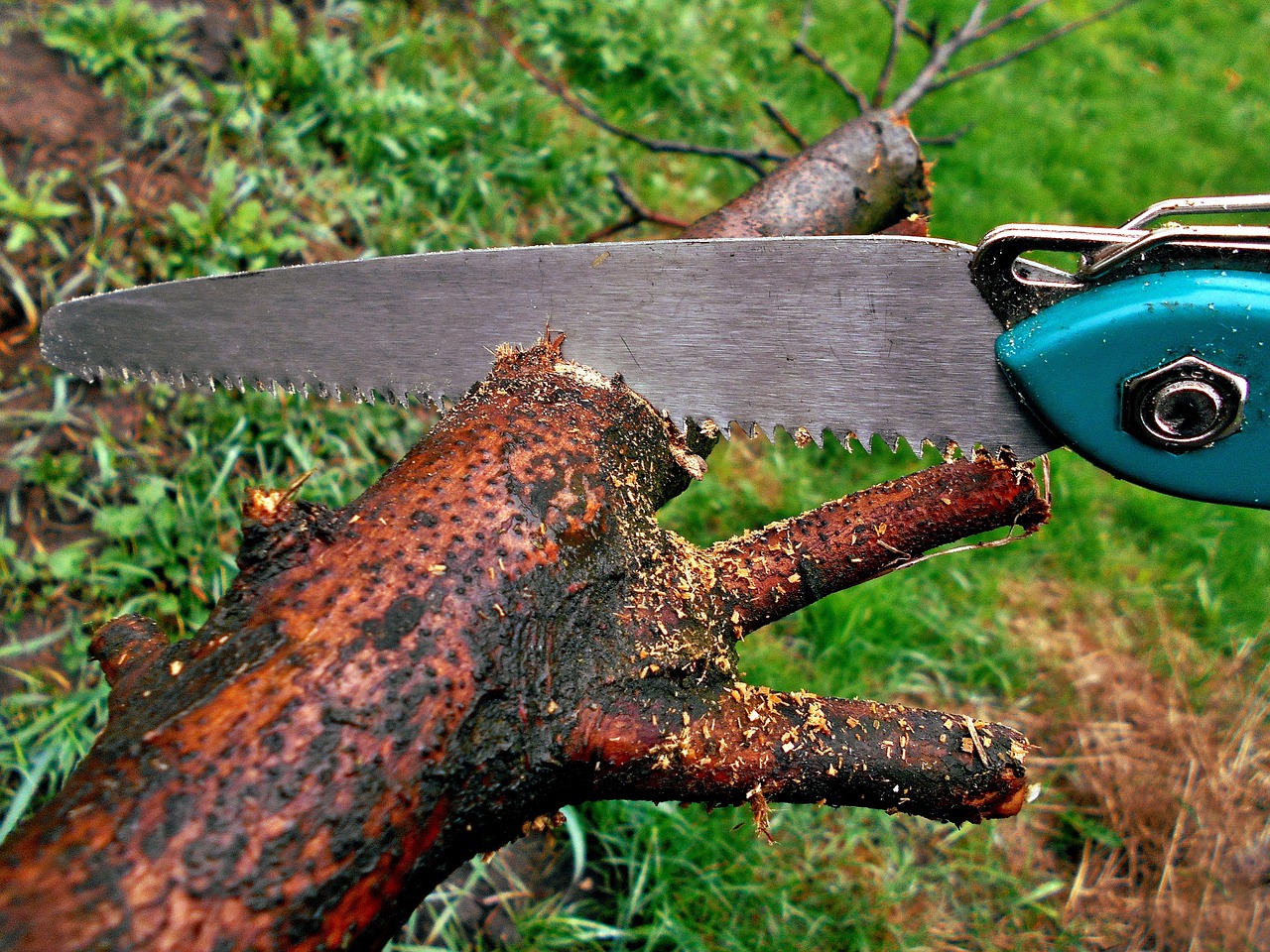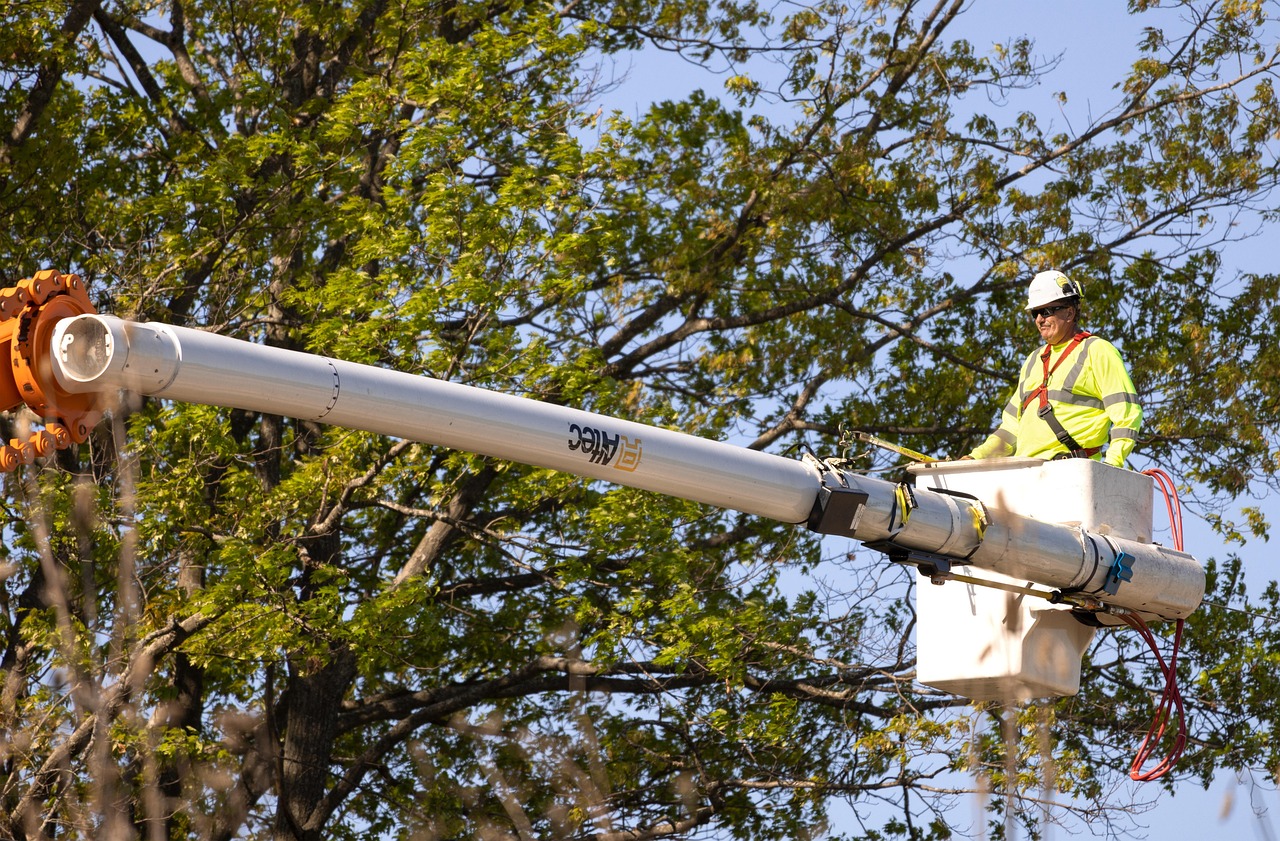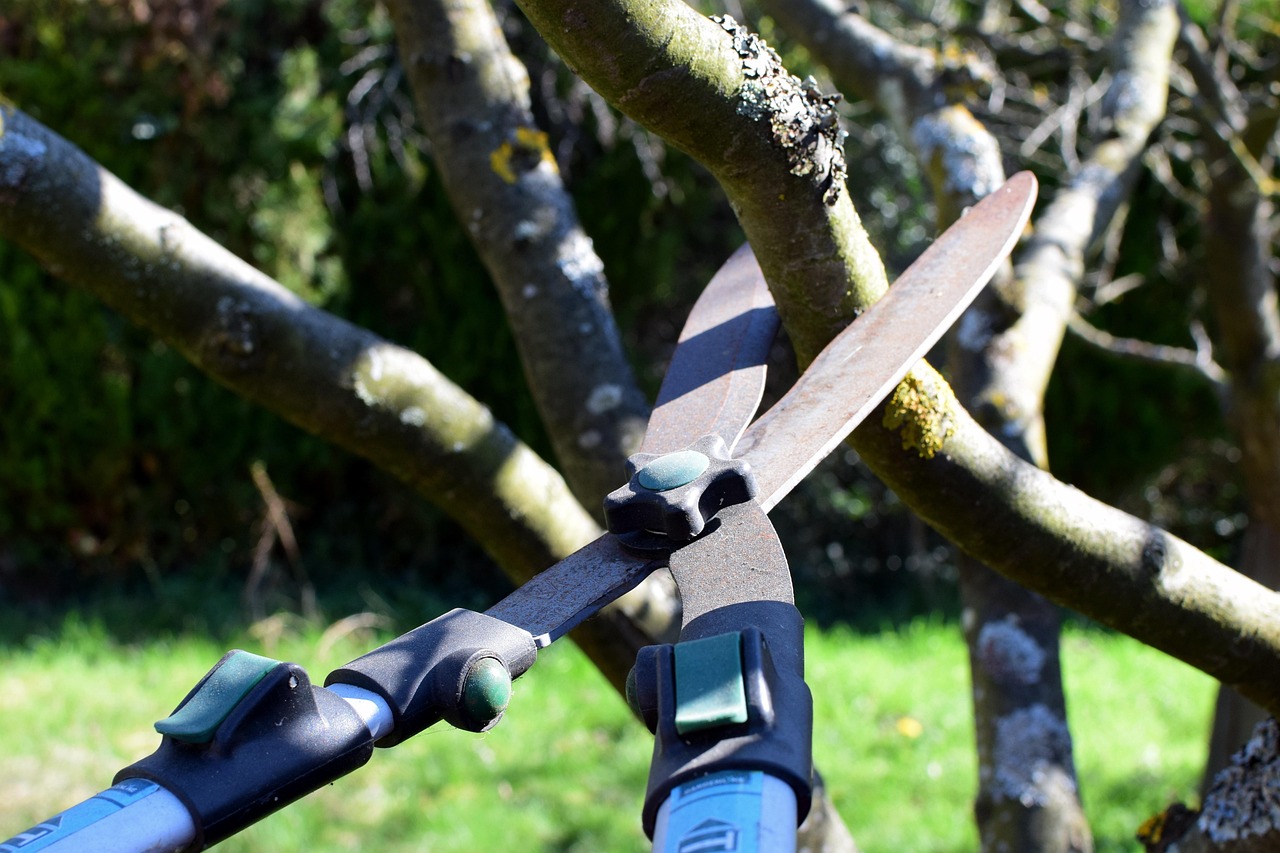Pruning trees in compacted urban soil requires careful consideration to promote healthy growth. Focus on removing dead or damaged branches to enhance airflow and light penetration. Avoid excessive pruning, as it can stress the tree. Timing is crucial; prune during dormancy in late winter or early spring. Ensure tools are sharp and clean to prevent disease transmission.
Pruning trees that grow in compacted urban soil requires careful techniques and timing to encourage healthy growth. Proper pruning helps improve air circulation, light penetration, and overall tree health, which is critical in challenging urban environments.
Urban areas often present unique challenges for tree growth. Compacted soil is a common issue in cities due to heavy foot traffic, construction, and infrastructure development. When soil becomes compacted, it reduces the air pockets that roots need to thrive. This leads to stunted growth and can make trees more susceptible to diseases and pests. Pruning becomes essential in these conditions to ensure trees remain healthy and resilient.

Understanding the impact of compacted soil on tree health is crucial for effective pruning. The following table outlines some key effects of soil compaction on tree growth.
| Effect | Description |
|---|---|
| Reduced Root Growth | Compacted soil limits the ability of roots to expand and absorb nutrients. |
| Poor Water Drainage | Soil compaction can lead to water pooling, which may cause root rot. |
| Limited Nutrient Availability | Compacted soil often contains fewer nutrients, impacting tree health. |
| Increased Stress | Trees in compacted soil experience more stress from drought and other environmental factors. |
The Importance of Pruning
Pruning is a vital practice for maintaining the health and structure of trees. It helps to remove dead or diseased branches, allowing for better air flow and sunlight penetration. This is particularly important for trees growing in compacted urban soil, where competition for resources can be intense.
When pruning, it is important to use the right tools and techniques. Hand pruners are suitable for smaller branches, while loppers or saws may be necessary for larger limbs. Always ensure that your tools are clean and sharp to make clean cuts, which helps prevent the spread of disease.

Timing Your Pruning
The timing of pruning is critical for optimal results. In general, late winter to early spring is the best time for most tree species. This is when trees are still dormant, reducing stress on the plant. Observing the specific growth patterns of your trees will help determine the best time to prune.
However, some trees have specific pruning needs. For example:
- Deciduous Trees: Best pruned in winter when they are dormant.
- Evergreen Trees: Should be pruned in late spring after new growth starts.
- Flowering Trees: Prune spring-flowering varieties immediately after blooming.
Pruning Techniques for Urban Trees
When pruning trees, especially those in compacted soils, certain techniques can promote better health and growth. Here are some recommended practices:

- Crown Cleaning: Remove dead, diseased, or broken branches to enhance overall tree health.
- Crown Thinning: Selectively remove branches to increase light penetration and air circulation.
- Crown Raising: Remove lower branches to allow clearance for pedestrians and vehicles.
- Crown Reduction: Reduce the size of the tree while maintaining its natural shape, ensuring it doesn’t become top-heavy.
Each technique has its purpose and should be chosen based on the specific needs of your tree and its surroundings. Additionally, it is important to avoid excessive pruning, as this can lead to further stress and potential issues.
Aftercare Following Pruning
After pruning, proper care is essential for helping trees recover and thrive in compacted urban soil. Here are a few aftercare tips:
- Watering: Ensure that trees receive adequate water, especially during dry spells.
- Mulching: Apply organic mulch around the base of the tree to conserve moisture and suppress weeds.
- Monitoring: Keep an eye on the tree for signs of stress or disease after pruning.
By following these practices, you can help your urban trees grow strong and healthy despite the challenges posed by compacted soil.

Common Challenges in Pruning Urban Trees
Pruning trees in compacted urban soil presents several challenges. Understanding these challenges can help you develop effective strategies for maintaining tree health. Some of the most common issues include:
- Limited Root Space: Compacted soil often restricts root growth, making it difficult for trees to absorb nutrients and water.
- Structural Weakness: Trees in urban environments may develop structural weaknesses due to poor root development, increasing the risk of branch failure.
- Pest and Disease Pressure: Urban trees face higher exposure to pests and diseases, which can complicate pruning efforts.
- Environmental Stress: Urban trees may experience more environmental stress from pollution, drought, and temperature fluctuations.
Identifying Trees in Need of Pruning
Recognizing when a tree needs pruning is essential for maintaining its health. Several signs indicate that a tree may require attention:
- Dead or Diseased Branches: Look for branches that are brown, brittle, or exhibit signs of decay.
- Crown Density: If the tree’s canopy is overly dense, it can limit light penetration and air circulation.
- Crossing Branches: Branches that rub against each other can create wounds and increase the risk of disease.
- Growth Direction: Trees that are leaning or have uneven growth may need pruning to encourage a balanced shape.
Regularly inspecting your trees will help identify these issues early. Early intervention can prevent more significant problems later on.
The Role of Soil Health in Pruning Success
The health of the soil directly influences the effectiveness of pruning. Healthy soil supports robust root systems, which are essential for nutrient and water uptake. Here are some ways to improve soil health in compacted urban areas:
- Aeration: Aerating compacted soil can enhance root growth and improve water infiltration.
- Soil Amendments: Incorporating organic matter such as compost can improve soil structure and fertility.
- Water Management: Implementing proper irrigation techniques helps ensure adequate moisture levels in the soil.
Improving soil health not only benefits the tree’s immediate needs but also supports long-term growth and resilience against stressors.
Seasonal Considerations for Pruning
The seasons play a significant role in determining when and how to prune urban trees. Understanding seasonal dynamics can enhance your pruning strategy:
Spring Pruning
Spring is typically the time when many trees begin to grow actively. Pruning in early spring, just before new growth begins, is ideal for many species. This timing helps minimize stress. However, be cautious with spring-flowering trees; pruning them after flowering is more beneficial to maintain their blooms.
Summer Pruning
Summer pruning can be effective for specific goals, such as controlling growth or removing deadwood. It is essential to avoid heavy pruning during this season as it can expose trees to sunscald and other heat-related stresses.
Fall Pruning
Fall is generally not recommended for most pruning activities. Trees are preparing for dormancy, and pruning at this time can stimulate new growth that may not survive the winter. However, it can be appropriate to remove dead or diseased branches.
Winter Pruning
Winter is often considered the best time for pruning many deciduous trees. During dormancy, trees are less susceptible to stress and disease. This period allows for easier visibility of branch structure without leaves, making it easier to assess the tree’s needs.
Tools Needed for Effective Pruning
The right tools are essential for successful pruning. Using proper equipment minimizes damage to the tree and ensures clean cuts. Here are some commonly used tools:
| Tool | Description | Best Use |
|---|---|---|
| Hand Pruners | Small, manual pruners suitable for branches up to ¾ inch thick. | Ideal for trimming small twigs and branches. |
| Loppers | Larger cutting tools with long handles for added leverage. | Useful for cutting branches up to 1 ½ inches thick. |
| Saws | Hand or powered saws for larger limbs. | Best for branches thicker than 1 ½ inches. |
| Pole Pruner | A tool with a long reach for high branches. | Effective for pruning tall trees without climbing. |
| Bypass Pruners | A type of hand pruner that makes clean cuts by sliding past each other. | Useful for making precise cuts on live branches. |
Using the appropriate tools ensures efficient pruning while minimizing harm to the tree. Regular maintenance of tools is also important to ensure they remain sharp and effective.
Understanding these various aspects of pruning trees in compacted urban soil will help you make informed decisions that promote healthy tree growth and longevity in challenging environments.
Understanding Tree Biology for Effective Pruning
To successfully prune trees in compacted urban soil, it is essential to understand tree biology. Knowing how trees grow and respond to pruning can guide your practices and improve outcomes. Trees consist of various parts, each playing a critical role in their overall health.
Key Parts of a Tree
The following sections outline the main components of a tree and their significance:
- Roots: Roots anchor the tree and absorb water and nutrients from the soil. Healthy roots are crucial for stability and growth.
- Trunk: The trunk provides support and transports nutrients and water between the roots and leaves through vascular tissues.
- Branches: Branches extend from the trunk, supporting leaves, flowers, and fruit. The structure and growth of branches are vital for a tree’s overall form.
- Leaves: Leaves are the main sites for photosynthesis, converting sunlight into energy. Healthy leaves are essential for tree vitality.
- Bark: The outer layer protects the tree from environmental stresses, pests, and diseases.
The Growth Cycle of Trees
Understanding the growth cycle of trees is crucial for determining the best time to prune. Trees typically go through several stages:
- Dormancy: In winter, trees enter a dormant phase. During this time, they conserve energy and do not grow actively.
- Bud Break: As temperatures warm in spring, buds swell and begin to grow. This is when new shoots and leaves emerge.
- Active Growth: Late spring through summer is characterized by vigorous growth. Trees put on new foliage and increase in height and width.
- Ripening: In late summer to early fall, trees prepare for dormancy. Leaves may change color and drop, while energy reserves are stored in the roots.
Pruning during dormancy minimizes stress on trees and allows for recovery during the active growth phase.
The Importance of Proper Pruning Techniques
Using proper pruning techniques is essential to promote healthy growth. Incorrect pruning can lead to poor health and structural issues. Here are some important techniques to consider:
Making Clean Cuts
When pruning, always aim for clean cuts. Jagged cuts can lead to infection and decay. Use sharp tools to ensure smooth edges, which will help the tree heal faster.
Understanding Pruning Cuts
There are several types of cuts used in pruning:
- Heading Cuts: These cuts shorten a branch by removing its tip. They encourage bushier growth but can lead to excessive sprouting if not done properly.
- Thinning Cuts: Thinning involves removing entire branches back to their point of origin. This technique promotes better airflow and light penetration.
- Crown Reduction Cuts: These cuts reduce the size of the tree’s crown while maintaining its natural shape. They are useful for managing height without compromising health.
- Cleanout Cuts: These involve removing dead or diseased branches within the canopy to improve overall tree health.
Recognizing Signs of Stress in Trees
A well-pruned tree will show signs of vigorous health. Conversely, recognizing signs of stress is essential for timely intervention. Look for these indicators:
- Poor Leaf Color: Leaves that are yellowing or wilting may indicate nutrient deficiencies or stress.
- Leaf Drop: Excessive leaf drop outside of the normal autumn cycle can signal underlying issues.
- Dieback: Dead branches or dieback at the tips of branches can suggest disease or pest problems.
- Pest Activity: Visible pests or signs of infestation can weaken trees significantly and may require immediate action.
The Role of Mulching in Tree Health
Mulching is an important practice that supports tree health, especially in compacted urban soils. It offers several benefits:
- Moisture Retention: Mulch helps retain soil moisture, reducing the need for frequent watering.
- Temperature Regulation: It insulates roots against extreme temperature fluctuations, helping maintain consistent soil temperatures.
- Weed Suppression: A layer of mulch can prevent weed growth, reducing competition for nutrients and water.
- Soil Improvement: As organic mulch decomposes, it adds nutrients back into the soil, enhancing overall soil health.
The application of mulch should be done correctly. Avoid piling it against the trunk of the tree, as this can lead to rot and other issues. Instead, spread it evenly around the base while leaving space around the trunk.
Utilizing Professional Help
While many homeowners can effectively prune their trees, some situations may require professional assistance. Consider hiring an arborist if you encounter:
- Larger Trees: Trees that are too tall or large for safe pruning should be handled by professionals with proper equipment.
- Disease Issues: If a tree shows signs of disease that you cannot identify or manage, an arborist can provide guidance.
- Structural Problems: Trees with significant structural issues may need expert evaluation to prevent hazards.
A qualified arborist can assess your trees’ needs and recommend appropriate actions to ensure their health and longevity in urban environments.
Long-term Maintenance for Urban Trees
Pruning is just one aspect of maintaining trees in compacted urban soil. Long-term care is essential for ensuring trees continue to thrive in challenging conditions. Here are several practices to consider for ongoing tree health:
Regular Inspections
Conducting regular inspections of your trees allows you to catch potential problems early. Look for:
- Branch Health: Check for dead or broken branches that may need pruning.
- Leaf Condition: Monitor leaves for discoloration, wilting, or signs of pests.
- Root Exposure: Ensure that roots are not exposed due to soil erosion or compaction.
Documenting your observations can help you track changes over time and identify patterns that may need addressing.
Soil Testing
Periodically testing the soil can provide valuable information about nutrient levels and pH balance. This can help in making informed decisions about soil amendments and fertilization. Here’s what to consider:
- Nutrient Levels: Know which nutrients are lacking and what amendments may be necessary.
- pH Levels: Ensure the soil pH is suitable for the types of trees you are cultivating.
- Microbial Activity: Healthy soil contains beneficial microorganisms that support tree growth.
You can perform soil tests through local agricultural extensions or professional services that specialize in soil analysis.
Fertilization Strategies
Fertilizing trees properly can enhance growth, especially in nutrient-poor, compacted soils. Consider these strategies:
- Organic Fertilizers: Use compost or well-rotted manure to improve soil structure and provide nutrients.
- Slow-Release Fertilizers: These provide nutrients over time and help prevent nutrient leaching.
- Foliar Feeding: Spraying liquid fertilizers directly onto leaves can offer quick nutrient absorption.
Always follow the recommended application rates and timing to avoid over-fertilization, which can harm trees.
Environmental Considerations
Urban areas often face environmental challenges such as pollution, climate change, and limited green spaces. Understanding these factors can help in maintaining healthy trees. Here are some considerations:
- Pollution Effects: Trees can absorb pollutants, but they may also suffer from stress due to air quality issues. Selecting pollution-tolerant species can enhance urban greenery.
- Climate Adaptability: Choose tree species that are resilient to urban heat islands and changing climate conditions.
- Water Management: Implementing rain gardens or permeable surfaces can help manage stormwater and improve soil moisture levels around trees.
Integrating trees into urban planning helps create healthier environments for both people and wildlife while improving overall urban aesthetics.
The Community’s Role in Urban Tree Care
Caring for urban trees is a collective responsibility. Community engagement plays a vital role in maintaining healthy urban forests. Here are some ways communities can contribute:
- Education Programs: Workshops and seminars on tree care can empower residents with knowledge.
- Tree Adoption Programs: Encourage individuals or groups to take responsibility for specific trees in parks or along streets.
- Volunteer Days: Organize community events focused on planting, pruning, and caring for urban trees.
A strong community commitment fosters a sense of ownership and pride in local green spaces, enhancing urban biodiversity and beauty.
Conclusion
Pruning trees growing in compacted urban soil requires a thoughtful approach that considers tree biology, environmental factors, and community involvement. Proper pruning techniques, regular inspections, soil health management, and appropriate aftercare all contribute to the resilience and longevity of urban trees.
By understanding the challenges posed by compacted soils and implementing effective practices, homeowners and communities can foster healthy urban forests that thrive despite the difficulties of their environment. Trees play a crucial role in enhancing urban landscapes, improving air quality, and providing shade and beauty. With ongoing care and commitment, we can ensure that these vital resources continue to flourish for generations to come.
